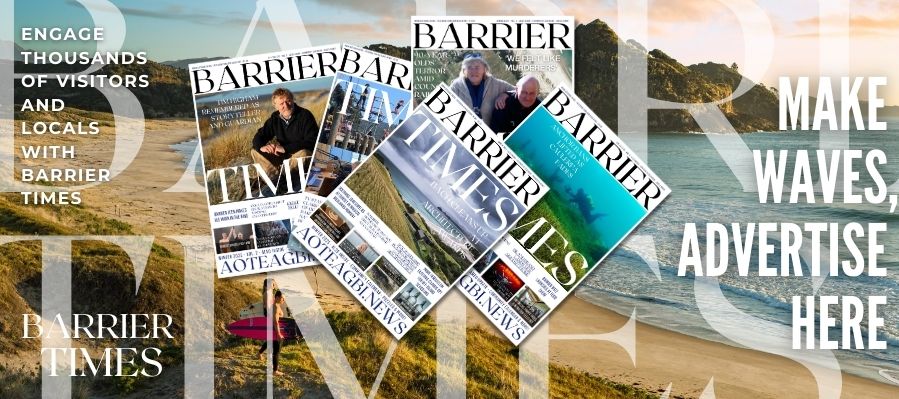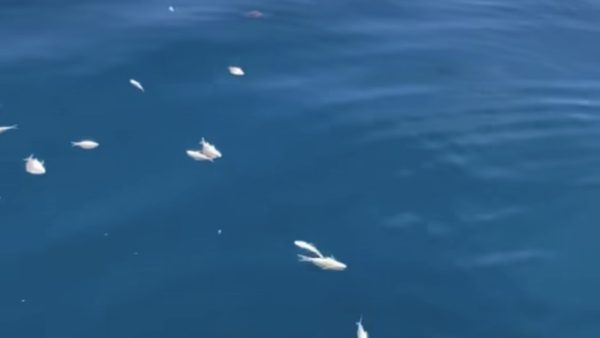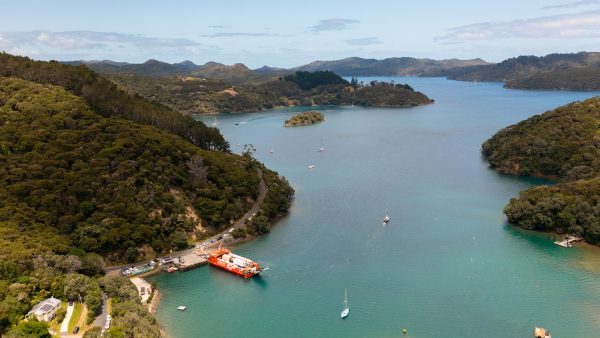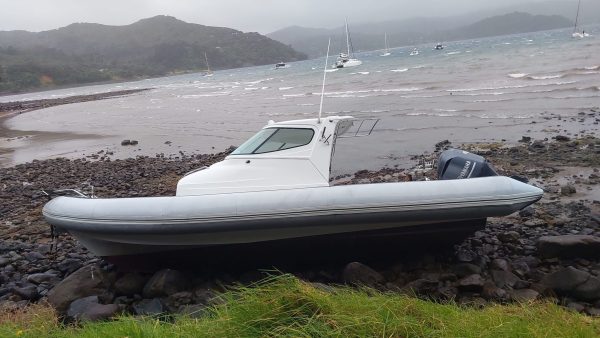By Phil Pennington, RNZ
An Auckland Council report has found helicopters buzzing Waiheke Island are not unsafe, overly noisy or breaking the rules.
But it suggests the noise limit could be lowered anyway, cutting down on the types of chopper that could fly either there or to Aotea Great Barrier.
Gulf islanders briefed on the findings yesterday said there was no reason those limits could not have been lowered 18 months ago when they pushed for it – but they were not, and in the meantime helipad numbers have jumped on Waiheke from 50 to about 60, and on Aotea from near zero to nine.
Little Rakino island northwest of Waiheke is also getting attention, with applications to put in two helipads to replace the sole one already there.
Waiheke and Aotea protests sparked the council investigation last May. Residents complained flights were noisy, unsafe, a threat to the natural environment and a blight on both Waiheke and Aotea Great Barrier as peaceful havens.
The report on the investigation’s findings, which has now been released, said chopper activity on Waiheke was at about the same level as in other parts of Auckland, and operators followed consent conditions closely.
But local board chair Cath Handley said the data showed, for instance, more than a third of all of Auckland’s flights at Labour Weekend went to or over the island.
“All of it says Waiheke has an extraordinarily high level of helicopter… flights and landing here or flying over,” she said, after a briefing from Auckland Council planners.
The investigation had also only covered consented operations and not all the informal, unconsented flights, she added.
The council note to the Waiheke board meeting on Wednesday said about the findings: “A comprehensive change to helicopter provisions
is considered to have low justification],” at least, ahead of the 2026 review of the citywide Unitary Plan.
It said if the council planning committee chose to opt for some type of tightening of consents then lowering the noise limit was recommended.
This was quick and did not require any public consultation.
It “would result in narrowing the range of helicopters able to be considered”.
The status quo option, of delaying any change until the 2026 Unitary Plan review, carried the “highest risk”, it said.
Two other options for tightening either the islands’ district plan, or the city’s Unitary Plan, would take longer and cost at least $250,000.
Handley said the first of these, changing the islands’ district plan so chopper consents had to take flora and fauna into account, was what the local board wanted, and would push for when the council planning committee meets on 30 March.
“There are plenty of people around that table who have the background to do this and who have expressed concern, so I would expect them to go, ‘This is actually quite simple, just do it’.”
And to not stop there, but get changes to the Unitary Plan underway as well, she said.
Meanwhile, and quickly, they wanted the noise limit lowered.
“We found out today actually from the senior planning team from council, that it could take up to two weeks to do, and we’ve been struggling with this issue for two years.”
Flora and fauna
Lobby group Quiet Sky Waiheke told the local board the council had a long-standing obligation to give effect to the Coastal Policy Statement to protect flora and fauna.
“It was supposed to have done it and, I quote, ‘as soon as practicable’ after it was introduced in 2010 – that’s 13 years ago,” said spokesperson Kim Whitaker.
“The council’s own practice and guidance notes on helicopters states [that] resource consent applications for helicopter landing areas within a coastal environment should be supported by an assessment against the [Coastal Policy Statement] and supporting expert reporting, including on biodiversity.
“As we have seen, this is just being totally ignored in all of the consents.”
The Aotea local board is due to discuss the report on 28 March.
As it stands, applications for helipads typically do not need to be notified, so residents are mostly unaware of them, and the planners are constrained to only weighing up the impacts of noise, not other factors, such as amenity, the wider environment or whether flights fit with the council’s emission reduction goals.
The council planners told the local board, in brief:
Safety
“The CAA [Civil Aviation Authority} have reviewed aircraft movements and do not have any specific concerns with regards to flight safety.”
Handley last year said airspace was uncontrolled and “extremely dangerous”, and called on the authority to intervene.
Flight rules
“Consent holders are adhering to flight paths and flight take-offs and landings are within the consented limits. Non-compliance is largely limited to changes in helicopter type to newer models.”
Too busy
“Waiheke helicopter activity is comparable to other parts of Auckland.”
Complaints
“The level of complaints [Auckland wide] received to council’s complaints register about helicopter activity is low.”
Climate change
Government and council goals “will be relevant … and may be considered” when issuing consents, however, that might also require a plan change, depending which chopper management option the council went with.
Māori
Mana whenua would be consulted about any changes.
Māori on Aotea have said the council had not taken their views about significant historical sites into account enough.
-RNZ







